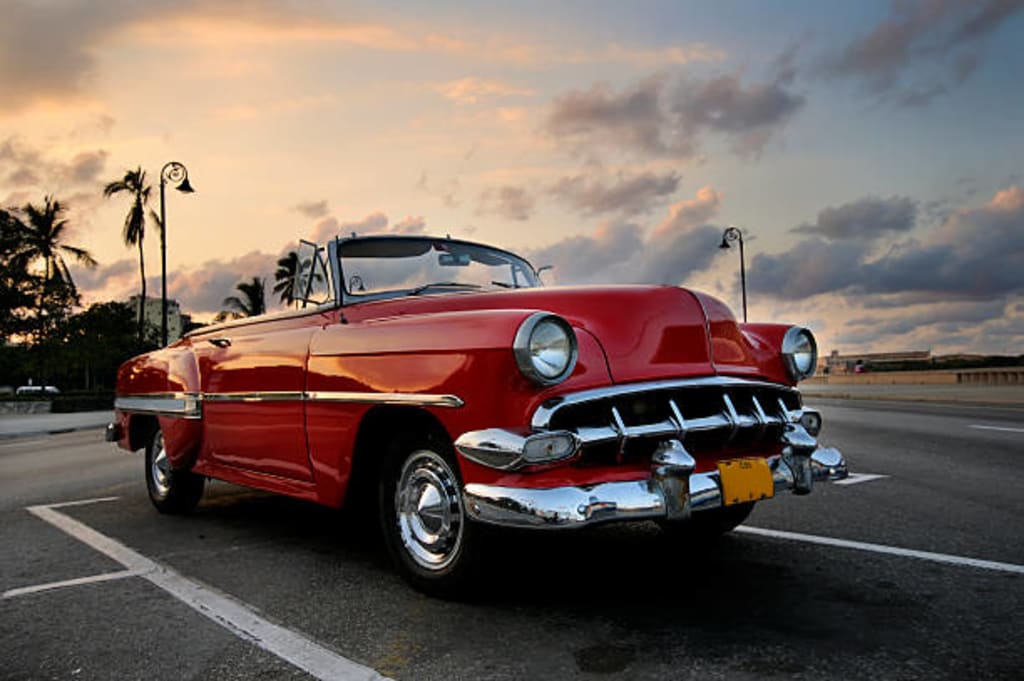The Timeless Charm of Old-Fashioned Cars
History reminding cars

Introduction
The era of old-fashioned cars, also known as vintage or classic cars, holds a special place in the hearts of automobile enthusiasts and collectors alike. These remarkable vehicles, which embody a bygone era, continue to captivate us with their timeless charm. This article delves into the fascinating world of old-fashioned cars, exploring their history, design elements, and the enduring allure that continues to make them beloved symbols of automotive craftsmanship.
I. The Origins of Old-Fashioned Cars
The seeds of old-fashioned cars were sown in the late 19th and early 20th centuries, during the dawn of the automotive industry. Pioneering manufacturers such as Ford, Chevrolet, and Rolls-Royce played pivotal roles in shaping the development of these iconic automobiles. Initially, they were crafted with meticulous attention to detail and featured luxurious materials, making them status symbols for the elite.
II. Design Elements and Aesthetics
Old-fashioned cars possess distinctive design elements that set them apart from their modern counterparts. Their sleek, curvaceous bodies exude elegance and sophistication. Chrome accents, ornate grilles, and bold hood ornaments add a touch of grandeur to their exteriors. Inside, plush leather seats, polished wooden dashboards, and intricate instrumentation panels transport occupants to an era of opulence and refinement.
III. Mechanical Ingenuity
Underneath their stunning exteriors, old-fashioned cars boast mechanical innovations that were groundbreaking for their time. Many of these vehicles feature large-displacement engines with fewer electronic components, making them simpler to maintain and repair. Manual transmissions, often with a "three on the tree" gearshift pattern, provide a more engaging driving experience. Additionally, drum brakes, independent front suspensions, and solid rear axles were common features that showcased the engineering prowess of their era.
IV. Driving Experience and Nostalgia
Owning and driving an old-fashioned car is an immersive experience that connects enthusiasts with the past. The sound of a throaty engine, the smell of aged leather, and the sensation of gliding along the road evoke a sense of nostalgia and authenticity. Classic car events and rallies allow owners to showcase their meticulously restored vehicles, fostering a sense of community among like-minded individuals who appreciate the enduring beauty of these automotive treasures.
V. Preservation and Future
Preserving old-fashioned cars is essential to safeguarding our automotive heritage. Collectors, restorers, and museums play crucial roles in maintaining these remarkable machines. However, challenges such as scarcity of parts, rising costs, and evolving emission standards present obstacles to their preservation. Despite these challenges, the allure of old-fashioned cars remains strong, and their legacy continues to inspire modern designs, ensuring their enduring relevance in the automotive world.
Conclusion
Old-fashioned cars embody a rich tapestry of history, design, and mechanical ingenuity. They transport us to an era characterized by elegance, craftsmanship, and the joy of open-road driving. The enduring allure of these remarkable vehicles lies not only in their aesthetic appeal but also in the stories they tell and the memories they evoke. As we move forward in the age of modern automobiles, let us continue to appreciate and preserve the timeless charm of old-fashioned cars, celebrating them as true icons of automotive excellence.
Title: The Allure of Old-Fashioned Cars: A Journey into Automotive Nostalgia
Introduction (
Old-fashioned cars hold a timeless appeal, capturing the imagination with their classic design, mechanical simplicity, and nostalgic charm. These automotive treasures, built in the early days of the automobile industry, have left an indelible mark on the history of transportation. In this exploration of old-fashioned cars, we delve into their origins, defining characteristics, iconic models, and the enduring fascination they evoke among collectors, enthusiasts, and those who appreciate the artistry and craftsmanship of a bygone era.
Origins and Evolution (150 words):
The roots of old-fashioned cars can be traced back to the late 19th century when the automobile industry was still in its infancy. Karl Benz's creation of the first practical automobile in 1885 marked a milestone in transportation history. These early vehicles featured rudimentary designs, with wooden frames, large spoked wheels, and hand-cranked engines. Over time, innovations such as electric starters, enclosed cabins, and more powerful engines transformed the automobile landscape.
Characteristics and Design (200 words):
Old-fashioned cars are characterized by their vintage aesthetics and mechanical simplicity. They often boast long hoods, sweeping fenders, prominent grilles, and elegant curves that exude elegance and sophistication. Many models feature luxurious leather interiors, ornate wood paneling, and polished metal accents, showcasing the meticulous craftsmanship of the era. Open-top convertibles, such as the Ford Model T or the Chevrolet Bel Air, are particularly iconic, evoking a sense of carefree nostalgia.






Comments
There are no comments for this story
Be the first to respond and start the conversation.